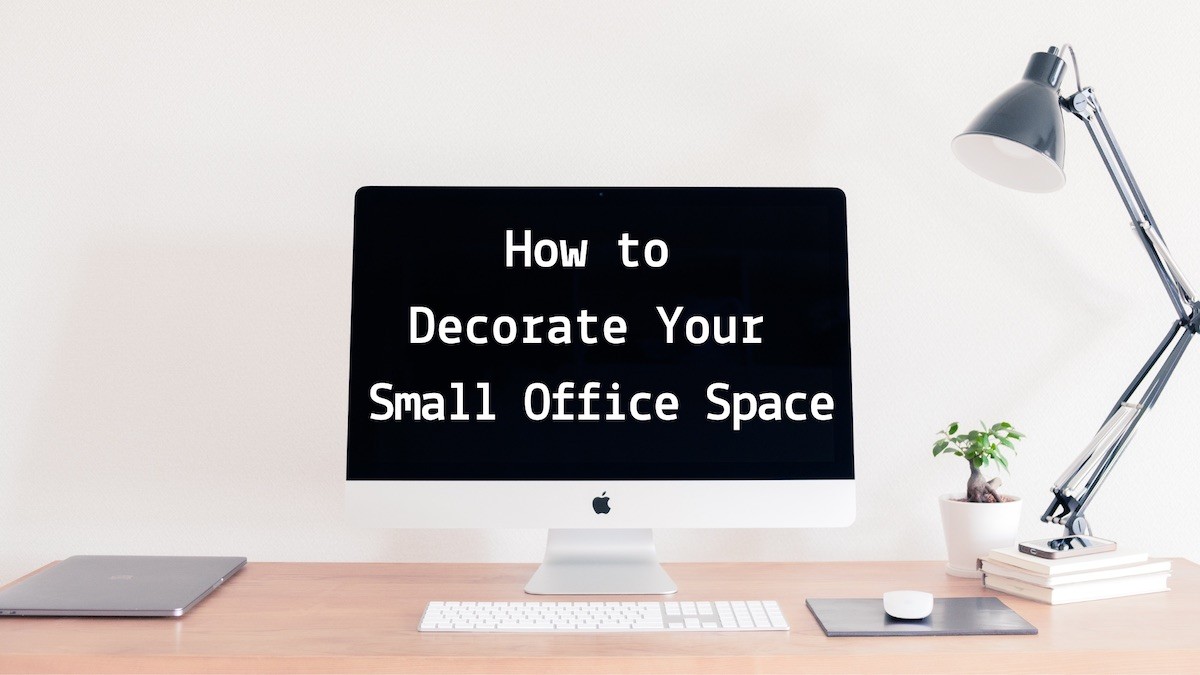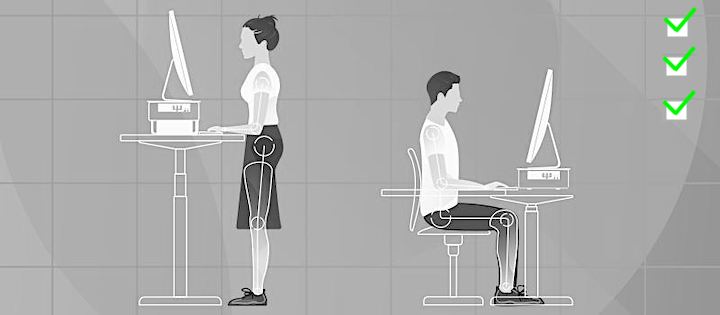The average American spends up to 90% of their time indoors, a large portion of this includes their working hours spent in an office environment. Indoor office air quality is an important, yet sometimes overlooked, aspect of our environment that can profoundly impact the health, comfort, well-being and productivity of employees.
The U.S. Environmental Protection Agency (EPA) and other organisations have conducted several studies that show that indoor environments often have higher levels of pollutants than are found outside. These pollutants found in our work environments can increase the risk of illness, which also inadvertently impacts the productivity and efficiency of an organisation. Studies conducted by the EPA, various states, and several independent scientific panels have routinely ranked indoor air pollution as an important environmental health problem. Although most workplace buildings may not have severe office air quality problems, even well-run offices can experience periods of poor indoor air quality.
Summary of fresh air requirements in office buildings based on
Ventilation rates in offices - mechanical and natural prepared by David Clark
| Issue | Fresh Air Requirement |
|---|---|
| Odours | Research shows that an occupant’s perception of indoor air quality is strongly influenced by odour.1 This can be controlled by introducing fresh air and/or treating recirculated air. Toilet exhausts are an example of removing odours at source without recirculation. |
| CO2 | CO2 concentrations are often used as a surrogate indicator for odours inside buildings, with a limit of between 1,000 to 1,500 ppm typically adopted, (compared to 450 ppm currently found in outside air). This typically requires between 7.5 to 10 l/s/person of outside air to achieve. Prolonged CO2 levels above 1,500 ppm may cause occupants to feel drowsy, get headaches, or function at lower activity levels. |
| Indoor pollutants | These include volatile organic compounds (VOC) and formaldehyde (off-gassing from carpets, paint and furniture), ozone (from photocopiers), carbon monoxide, radon, sulphur dioxide, and a host of other substances. The best approach is to avoid introducing pollutants in the first place by selecting low offgassing materials and to exhaust sources of pollution locally (e.g. direct exhaust of photocopy rooms). |
| Cigarette smoke | Smoking indoors was a major source of indoor pollutant and has been banned in many countries. A ventilation rate of at least 30 l/s/person is typically required if smoking is permitted. |
| Oxygen to breathe | To meet the human body’s demand for oxygen when seated typically requires less than 0.2 l/s/person of fresh air. This is clearly not a driver for minimum ventilation rates in buildings. |
The minimum fresh air requirement of 8 to 10 l/s per person typically adopted in mechanically
ventilated spaces is supported by a variety of sources. Fresh air requirements
for naturally ventilated spaces are treated differently.
Factors that Contribute to Office Air Quality
Page Contents
Unfortunately, office air quality is not a simple, straight forward and easily defined concept like a leaky faucet or a dirty window. Instead, it is an ever-changing interaction of complex factors that have an impact on the types, levels, and importance of pollutants in office environments. These factors include, but are not limited to:
- Levels of moisture, humidity, and temperature
- CO2 levels
- Design, operation, and maintenance of building ventilation systems
- Sources of odours or pollutants
- Individual susceptibilities and perceptions
There are three main strategies to control office air quality when pollutants are involved. The first is to manage the sources of the poor air quality by removing the pollutants from the building or by isolating them from people. This can be done through physical barriers, by controlling the timing of their use, or by air pressure relationships. The second is to dilute pollutants and/or remove them through ventilation. The last is to use filtration to clean out pollutants from the air.
Managing Office Air Quality
Pollutants may come from outdoor or indoor sources. These can include pest control, building maintenance activities, housekeeping, remodelling or renovation, new furnishings, and building occupant activities. Common pollutants are the result of unhealthy moisture and humidity levels. The most important goal of office air quality is minimising staff exposure to pollutants and keeping their work environment healthy.
Moisture and Humidity
Controlling moisture and relative humidity is vital in occupied work spaces. Moisture and dirt in an office can cause lead to the growth of mould and other biological contaminants. The growth and spread of unhealthy biological pollutants is also caused by relative humidity levels that are too high. Failure to dry water-damaged materials in a timely manner (within 24 hours) and/or failure to properly maintain equipment with drain pans or water reservoirs (such as humidifiers, ventilation equipment, or refrigerators) can also contribute to the growth of mould and other biological contaminants.
If you find your office to be humid, dehumidifiers can help remove the extra moisture. The OULUN Eurgeen Portable Dehumidifier can remove up to six gallons per day and is quiet enough that it won’t disturb your desk-mates. This dehumidifier will also automatically shut off when its tank is full, meaning you don’t have to keep checking.
However, low humidity levels aren’t necessarily the answer. When humidity levels are too low, staff may experience dry eyes, sinus discomfort, and irritated mucous membranes. If your workspace humidity levels feel too low, consider bringing a humidifier to work. This is an inexpensive solution that will provide relief from coughing and congestion. The LEVOIT Cool Mist Humidifier is whisper-quiet while it diffuses 95% bacteria-free mist into the air. We like this humidifier because it has a sensor which gauges the environment’s humidity levels and its LED display will display the relative humidity of your office.
Carbon Dioxide
You may remember from science class that people inhale oxygen (O2) and we exhale carbon dioxide (CO2). Carbon dioxide testing is important when examining the air quality of any office because if there is not enough outdoor or “fresh” air in the space, the levels of CO2 inside will rise. High concentrations of CO2 in an office building reflect an insufficient exchange of fresh air for “spent” interior air. This allows for the accumulation of human-source odours and other contaminants.
Indoor levels of CO2 should be controlled and monitored, and can be done through the use of a CO2 Detector. CO2 testing and monitoring is relatively inexpensive and is strongly recommended if there is any question of air quality. This is especially important if there are any potential issues with the venting of indoor combustion sources, like water heaters or furnaces. CO2 Detectors are able to provide you with a real-time understanding of the degree of air pollution in your office. We recommend this CO2 detector by Juweishangmao because of its high degree of sensitivity, rapid detection speeds, and because it also tests for formaldehyde concentration as well as temperature and humidity.
Office Air Quality and Its Impact on Productivity
People’s bodies and tolerances are all unique, which means that employees can react differently when exposed to the same contaminants at similar concentrations. For example, when exposed to biological contaminants, some employees may develop severe allergic reactions while others may not react at all. For those with pre-existing conditions like asthma, exposure to environmental irritants and high CO2 levels may cause more severe reactions.
If a working environment is perceived to have still or stale air, grittiness or errant temperature, odours, or uncomfortable humidity levels, employees will notice. By failing to meet staff comfort needs, either by not adequately controlling the humidity levels and temperature, or by not providing enough fresh air, productivity may suffer.
An EPA Report to Congress in 1989 concluded that improved air quality can lead to higher productivity levels and fewer lost work days due to illness. According to the EPA, poor office air quality may be costing the nation tens of billions of dollars every year in medical care and lost productivity.











